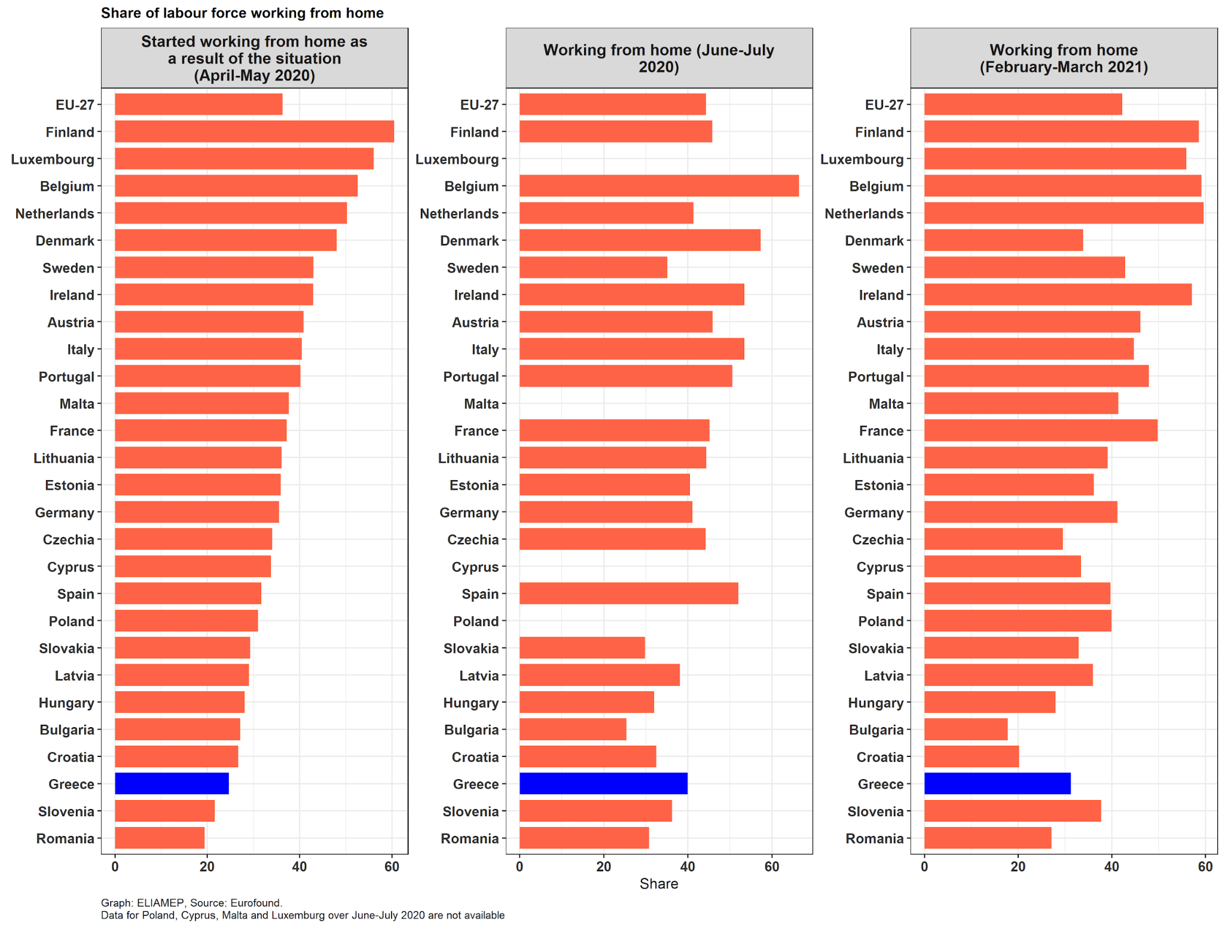In a recent interview to Financial Times, Nick Bloom, professor of economics at Stanford University, put working from home into perspective by describing its extent in the US and the UK. Pre-pandemic only 5% of all paid days were worked from home. During the pandemic that share increased to an unprecedented 50% of work days. After the lockdowns, it fell again to 25% of work days. Even before the pandemic working from home tended to increase, albeit at a slow pace. Approximately every 10 to 13 years the share of work days from home doubled. Over the last two years, the share of working from home increased at a rate which would have otherwise taken 30 years.
Working from home does not affect all jobs equally. An OECD analysis of data from six countries (Australia, USA, UK, France, Italy and Sweden) found the highest penetration rates of working from home in highly digitised service sectors. On average, more than half of employees in information, communication, technical and financial firms worked from home during the pandemic. Large businesses led the way; highly educated employees were more likely to switch from in-person to working from home over this period. Indicatively, a US employee holding a Master’s or PhD degree was 15 times more likely to work from home.
Eurofound collected data at three points in time: April-May 2020, June-July 2020, and February-March 2021. The survey provides a detailed description on the evolution of working from home in Europe. Countries like Finland, Belgium and the Netherlands responded immediately, with over 40% of employees declaring they had switched to working from home. Other countries, like Romania, Slovenia and Greece adapted more slowly, with fewer than 25% of those surveyed reporting that they had started working from home. European work practices evolved as the pandemic unfolded. On average in Europe, working from home increased from 36% to 44% within 5 months in 2020. As of the first quarter of 2021, many Europeans continued to work from home (42% in February-March 2021). In Greece, working from home peaked in June-July 2020 (40%), but that share fell to 31% in early 2021. No data are yet available on working from home as the vaccination campaign gathered speed (mid- to late 2021), however it is clear that Europeans are adapting quickly to the new norm.
As Europe faces the rapid spread of the Omicron variant, working from home in both the private and public sectors seems inevitable. Recent experience has shown that working from home allows most economic activity to continue at no significant productivity loss. At the same time, the spread of working from home creates new problems (delineating working time, integrating new employees, ensuring the socialisation and effective cooperation of co-workers) that will demand innovative solutions.




